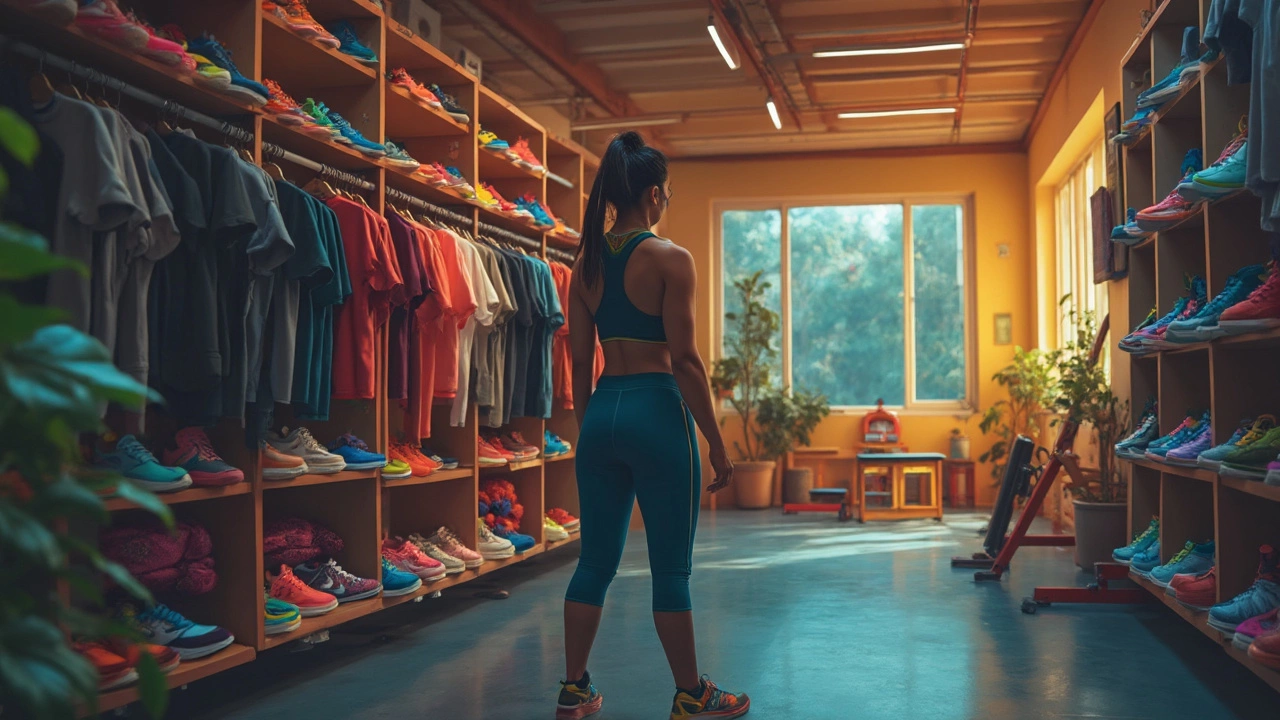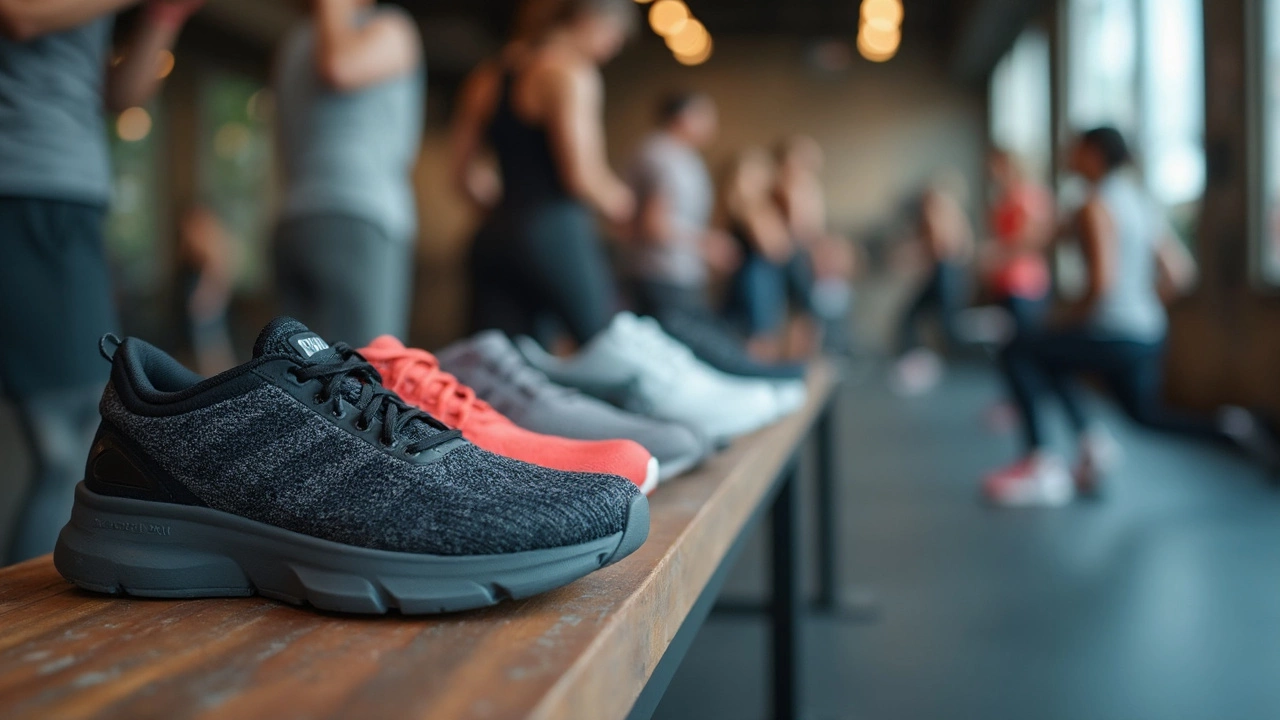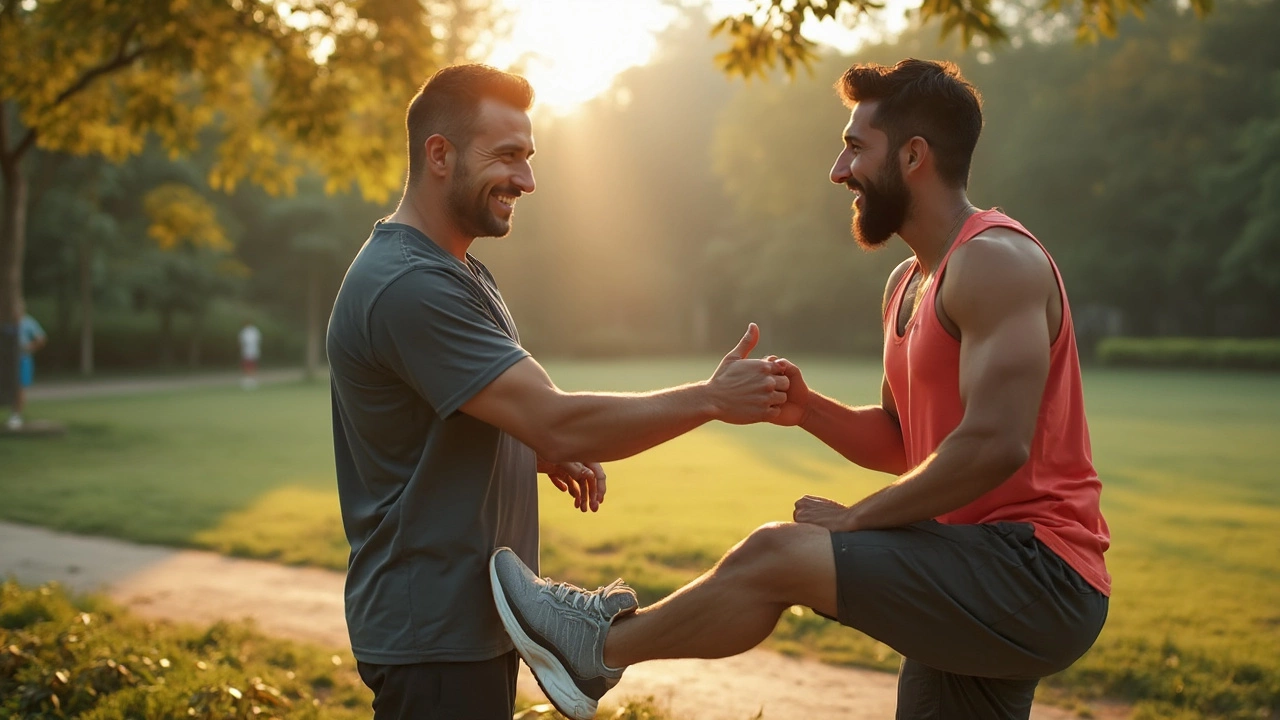Should I Wear Sneakers to PT? The Real Deal on Footwear for Personal Training
 May, 2 2025
May, 2 2025
Not sure if your everyday sneakers cut it for personal training? You’re not alone. The truth is, what’s on your feet can totally change your workout, whether you’re doing squats, sprints, or those awkward balance drills your trainer loves.
Ever tried lunges in flimsy old sneakers that slip on the gym floor? I have. Trust me, I almost landed on my butt. The right footwear isn’t just about looking the part—it helps you move safely and get the results you want without nasty surprises like rolled ankles or aching heels.
If you’re tempted to grab whatever shoes you wore to the grocery store, pause for a second. Footwear for PT needs to be stable, supportive, and built for the kind of moves you’ll actually do. Otherwise, it’s like showing up to a pool party in jeans. You’ll survive, but you’ll be annoyed—and probably won’t get much out of it.
- Why Footwear Matters for PT
- Types of Sneakers You See at the Gym
- The Pros and Cons of Wearing Sneakers
- Mistakes People Make with PT Footwear
- How to Choose the Right Sneakers for You
Why Footwear Matters for PT
You might think any old sneakers are good enough for personal training. But the shoes you wear at PT can massively impact your performance, comfort, and injury risk. Most trainers agree: your feet are the foundation of everything you do in the gym. When your shoes are wrong for the job, it’s like building a house on sand.
Here’s the thing—different moves need different types of support and grip. Good sneakers improve your balance and keep your feet snug during jumps, lunges, and sprints. Without solid shoes, your body tries to compensate, which leads to tweaks and injuries that can mess up your whole training plan.
Did you know that according to the American Academy of Orthopaedic Surgeons, over 25,000 people sprain an ankle every day in the US, often from wearing the wrong shoes? It’s a wild stat, but it shows just how much the right PT footwear matters.
Proper gym shoes also help with things like shock absorption so your knees and hips aren’t hammered by every jump. Cheap or worn-out shoes, meanwhile, let your joints take the hit, and that’s never good news long-term.
- Support: Quality PT shoes stabilize your ankles and arches, keeping everything in line.
- Comfort: Right-sized sneakers reduce blisters and rubbing, helping you focus on your workout (not your sore feet).
- Performance: Grip and flexibility in training shoes help you pivot, jump, and push off without slipping.
- Injury prevention: Proper shoes lower the risk of foot aches, shin splints, and rolled ankles, so you can train longer without setbacks.
The bottom line: It’s not some gear marketing trick. The right workout tips always start from the ground up, and that means taking what’s on your feet seriously during every personal training session.
Types of Sneakers You See at the Gym
Walk through any gym, and you’ll spot a wild mix of sneakers on everyone’s feet—some perfect for personal training, others not so much. Not all gym shoes are made equal, so let’s break down what you’ll actually find out there.
- Running shoes: These are everywhere. They’re comfy, loaded with cushion, and built for pounding the pavement. Great for cardio or treadmill runs, but their thick soles can get wobbly if you’re doing heavy lifts or side-to-side drills.
- Cross-trainers: Notice the label on those shoes that seem a little beefier? Cross-trainers are made for people who mix things up. They’ve got more lateral support, making them better for classes, agility moves, and strength work. If your PT sessions never look the same, cross-trainers might be your best bet.
- Minimalist sneakers: Ever see someone in super thin, almost slipper-like shoes? Minimalist kicks aim for a barefoot feel. They can boost foot strength, but if you’re not used to them, your arches might scream after a while. Definitely not for everyone, but some people swear by them for bodyweight training.
- Weightlifting shoes: You’ll spot these on folks who take deadlifting and squatting seriously. They have a raised, firm heel and zero squish so you get max stability. Perfect for leg day, but awkward if you’re heading straight into jump ropes right after.
- Everyday sneakers: The classic canvas or fashion pair you might wear just about anywhere. Sure, they look cool, but most lack support, grip, or shock-absorption. You can get away with them for light activities, but they won’t do you any favors if your trainer gets ambitious.
If you’re curious how folks actually split up their footwear in the gym, here’s a breakdown based on a 2024 fitness survey from a big U.S. sporting goods retailer:
| Type of Sneakers | Percent of Gym Users |
|---|---|
| Running Shoes | 45% |
| Cross-Trainers | 28% |
| Minimalist | 7% |
| Weightlifting Shoes | 9% |
| Everyday Sneakers | 11% |
Most people stick to running shoes because they’re comfy and easy, but if you’re focused on PT, think about grabbing a pair that matches your goals. The right choice can totally change your workout experience—and help you avoid those rookie aches and pains.

The Pros and Cons of Wearing Sneakers
When it comes to sneakers for personal training, there’s a lot to love—but also a few reasons to pause before lacing them up. Let's lay out what truly matters.
Pros of Wearing Sneakers:
- Support and Cushioning: Quality sneakers provide more arch support and shock absorption than flat-soled trainers or barefoot styles. This means your knees and ankles take less of a beating, especially during jumping or running drills.
- Injury Prevention: Experts agree that shoes with sturdy soles cut down on rolled ankles and slips. The right pair helps keep your feet stable during fast changes in direction.
- Hygiene: Let’s be honest—gyms are not the cleanest places. Closed-toe gym shoes protect you from random dropped weights and icky germs lingering on the floor mats.
- All-Purpose Use: If you’re bouncing from cardio to weights to stretching, a good sneaker handles it all. No one wants to swap shoes every five minutes.
Cons of Wearing Sneakers:
- Wrong Type = Problems: Not all sneakers are equal. Running shoes, for example, aren’t great for heavy lifting—they can wobble under weights, straining your ankles.
- Lack of Ground Feel: Some trainers prefer minimalist shoes because “feeling” the ground improves balance and form. Bigger, cushy sneakers can get in the way.
- Sweat and Smell: Let’s be real, gym shoes can trap moisture. Without breathable materials or swapping pairs, these shoes turn stinky fast.
- Cost: Specialized PT footwear with the best stability or flexibility isn’t usually cheap. If you want top quality for different training needs, it adds up.
| Sneaker Type | Strength Training | Cardio Workouts | HIIT |
|---|---|---|---|
| Running Shoes | Okay | Best | Good |
| Cross-Trainers | Best | Good | Best |
| Minimalist Shoes | Good | Okay | Okay |
Bottom line: the right sneakers pull their weight in PT, but only if they match what you’re actually doing. It’s a good idea to look at your regular workout routine and see if your current shoes are helping or holding you back.
Mistakes People Make with PT Footwear
Let’s face it, picking the wrong sneakers for personal training is way more common than you’d think. The big one? People show up in running shoes thinking they’re perfect for every workout. Here’s the thing: running shoes are usually built for forward movement, not all the side-to-side stuff you do in PT, like lateral lunges or agility drills. They can be too cushy, making your ankles wobble during strength moves.
Another one I see a lot—wearing beat-up old gym shoes that have lost all their shape. If your sneakers have more creases than your bedsheets, your feet probably aren’t getting the support they need. Shoes lose their structure and cushioning way quicker than most people think. Athletic trainers say most sneakers tap out after 300-500 miles, or about 6-12 months of steady use, even faster if you’re hitting the gym hard.
Let’s talk about fit. Tons of folks wear PT footwear that’s either too tight or so roomy their heel pops out. A shoe that’s too small squishes your toes and messes with your balance. Too big, and you risk blisters and trips. The trick is finding that goldilocks fit—not too loose, not too tight.
And don’t even get me started on style over function. Sure, those flashy white kicks look cool, but if they’ve got zero grip on the bottom, you’re skating on the gym floor. Same with big platform soles—they might add an inch, but they’re not doing your joints any favors when you’re lifting or jumping.
Here’s a quick list of mistakes to dodge:
- Wearing worn-out sneakers past their life span
- Picking shoes meant for the wrong activity (like marathon-running shoes for squats)
- Choosing style over actual support and grip
- Not checking shoe fit—either too loose or too tight
- Skipping socks or wearing slippery/no-show socks that bunch up
If you’re curious about how quickly shoes wear out, check this out:
| Activity | Average Sneaker Lifespan |
|---|---|
| Regular running | 300-500 miles (~6-12 months) |
| Daily gym training | 6-8 months |
| HIIT/Agility workouts | 4-6 months |
Quick tip: If your sneakers are showing cracks, flat soles, or have you feeling every rock underfoot, it's time for a new pair. Keep your PT footwear fresh and your feet—and back!—will thank you.

How to Choose the Right Sneakers for You
Walking into a store and seeing a wall of sneakers can feel overwhelming. But you really just need to dial in on what matters for your personal training sessions.
First, think about the type of workouts you’re actually doing. Are you lifting heavy weights, doing HIIT, running, or mixing it up? Not all gym shoes work for every kind of exercise. For example, running sneakers are built to cushion constant forward motion, but they might not give you enough side-to-side support for lifting or jumping.
Here’s what to look for when picking the right pair for personal training:
- Stability: Flat, firm soles help you feel grounded, especially during strength training. Trainers usually recommend shoes with minimal heel-to-toe drop for squats and deadlifts.
- Grip: Make sure the sole has solid traction. Slipping during lunges or box jumps is a recipe for disaster.
- Cushioning: If you do a lot of jumping or treadmill running, some extra padding helps keep your joints happy. Too much, though, and you’ll lose stability for lifting.
- Fit: Shoes should feel snug but not cramped. You want wiggle room for your toes, but your heel shouldn’t slide up and down.
- Breathability: PT sessions get sweaty. Mesh uppers or other breathable materials cut down on blisters and nasty smells.
- Durability: If you’re working out three or more times a week, pay attention to strong construction. Reinforced toes and sides can make a big difference.
Try this: bring the socks you train in to the store and try sneakers on in the afternoon, when your feet are a bit swollen (yep, real thing). Walk, jump, and squat in them before deciding. Don’t buy based on looks alone — flashy colors won’t protect your knees.
If you want to get technical, you can check your foot type. About 60% of people have slight overpronation (where your foot rolls inward when you walk). Stores sometimes do simple tests to help you find the best fit if this is a concern.
| Workout Type | Best Sneaker Features |
|---|---|
| Strength/Weightlifting | Flat, wide base; minimal cushion; strong grip |
| HIIT/Agility | Responsive cushioning; side support; good traction |
| Running/Walking | More cushion; flexible sole; breathable upper |
Your budget matters, too. There’s no need to drop $200 on a pair unless you’re doing competitive fitness. Plenty of solid sneakers for workout and PT land between $50 and $100.
One last tip—shoes don’t last forever. Most lose their support around the 300 to 500 mile mark (that’s roughly 5-8 months if you’re training 3 times a week). A good test: if they’re misshapen, losing tread, or you start to feel aches, it’s time for a new pair.
